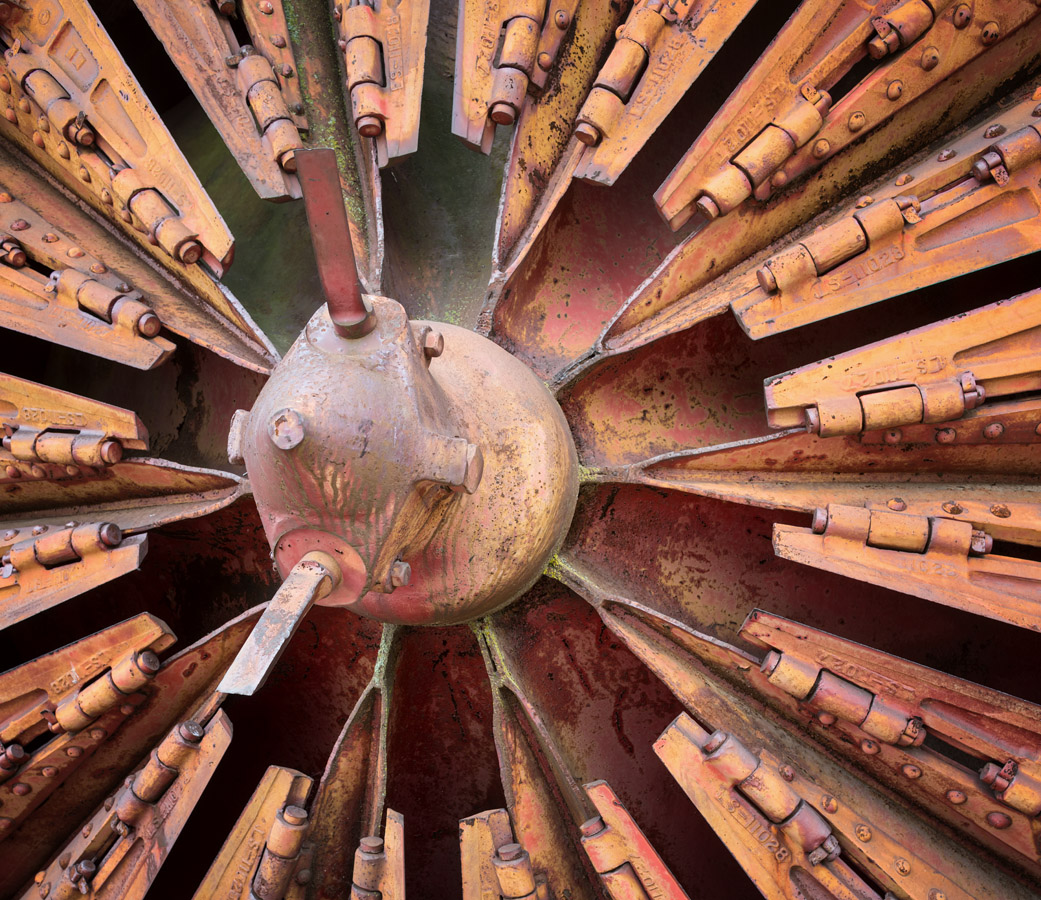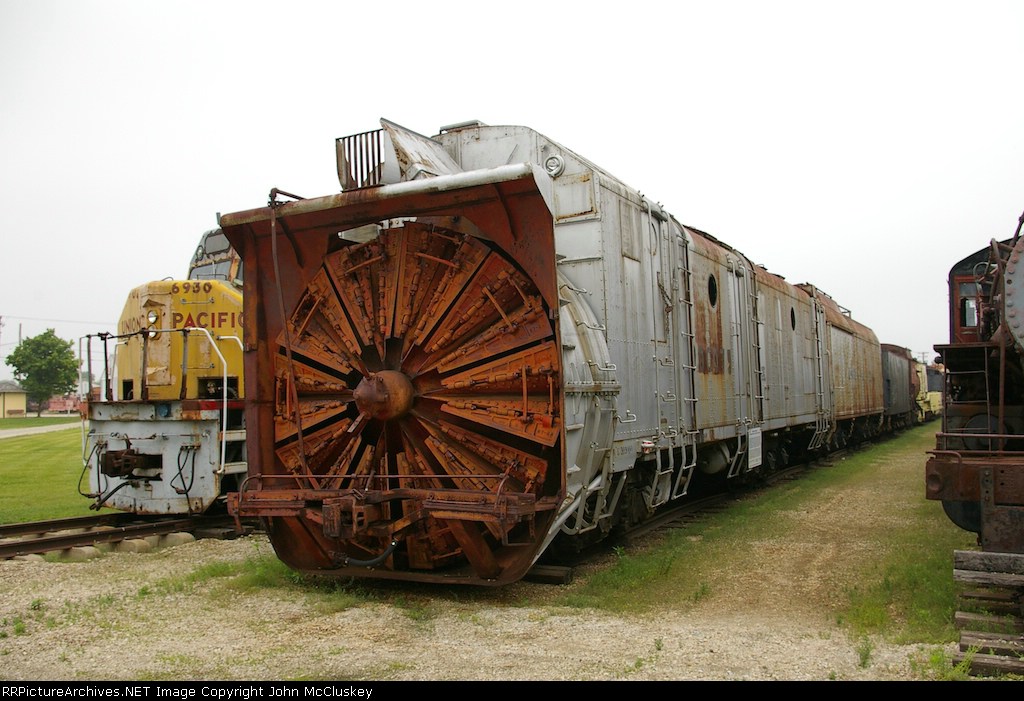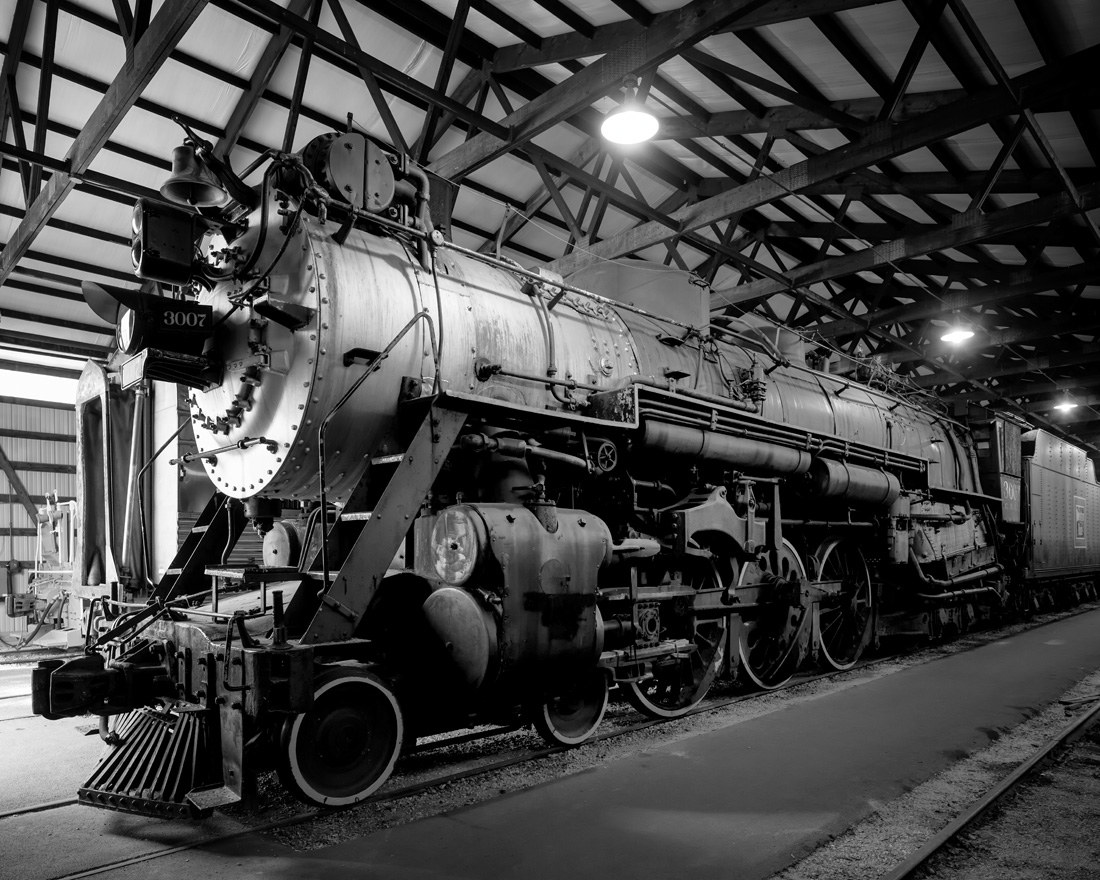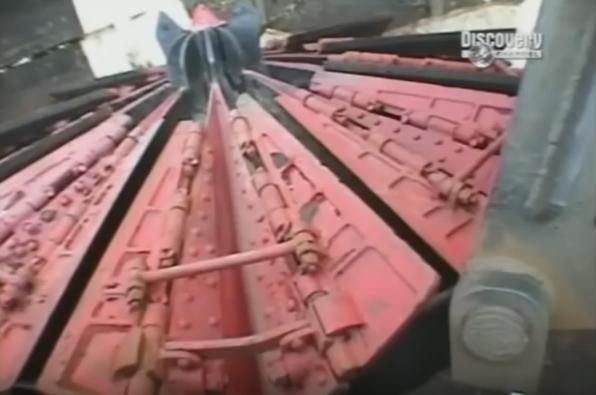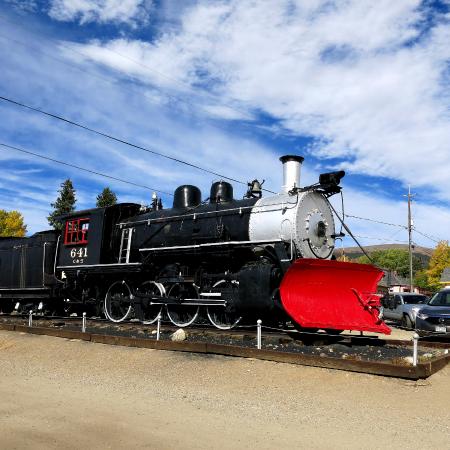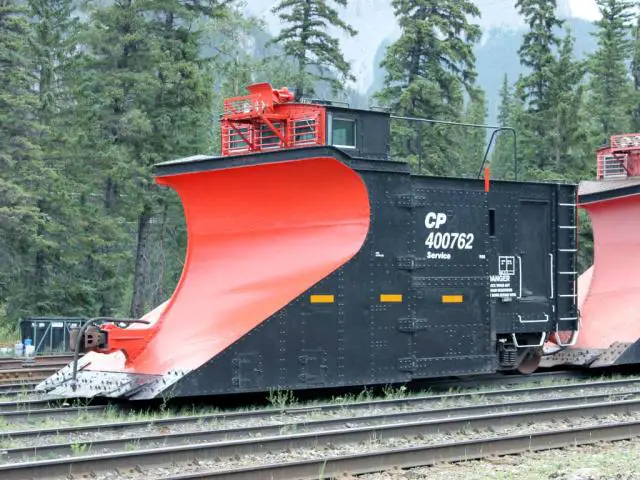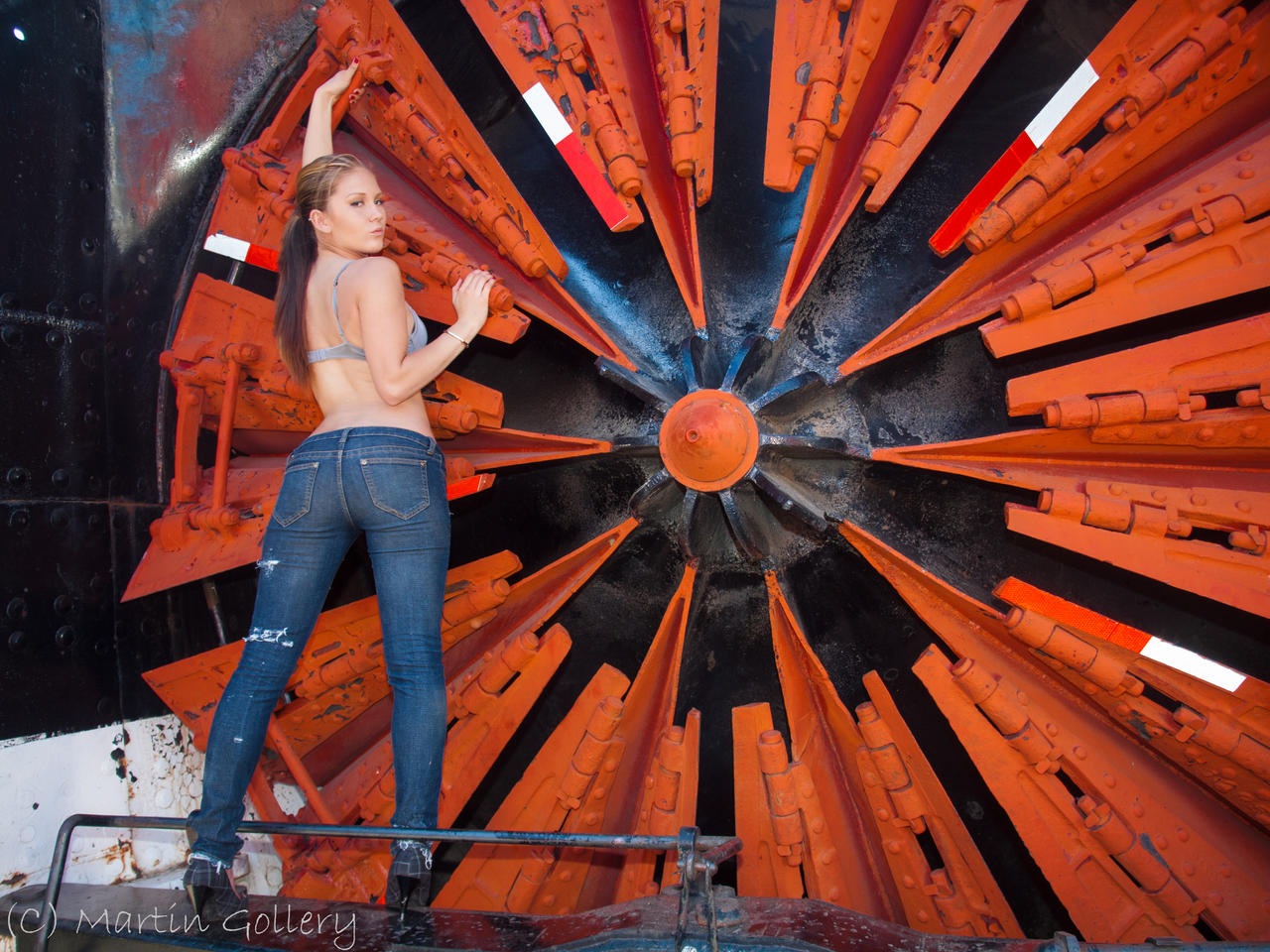Hi, Asher,
Does anyone know what these are made of? Is this a special steel and do blades have to be sharpened?
Dunno. Yes, probably a special steel that will be "tough", but I don't think the operation is dependent on the edges actually being "sharp".
Also how do they get the power from the engine? Is this linked through the wheels?
No, always (as near as I know) the cutter is separately-driven. In modern ones, I think they typically have a separate diesel engine to drive the cutter.
But to explain the situation in this machine, I need to give some background.
In conventional steam locomotives, the connecting rods (operated by the pistons) directly drive the wheels. Thus there is no distinct "steam engine" that drives the wheels - the locomotive
is the "steam engine".
But in a "Shay" locomotive (named after its inventor), there is what is essentially a self-contained steam engine (with its own crankshaft), which then turns a shaft that drives the wheels through gearing at each wheel axle. The major advantage is that with this situation, where there is a "gear reduction", the steam engine proper can run at a high speed but give the wheels a lot of torque. Thus this is especially good for locomotives used to haul logging trains up steep grades (at very moderate speeds).
You can see here the "classical" Shay configuration:
photo from Lima Locomotive Works
You see the actual "steam engine" in the center. This has three cylinder pairs, each one with a larger-diameter cylinder and a smaller-diameter cylinder. This is part of a "compound" scheme, where the steam (initially at high pressure) first works the small-diameter pistons and then, now partially exhausted and at lower pressure, works the large-diameter pistons, better suited to extract energy from lower-pressure steam (which flows at an increased volume). This is sort of a two-stage "impedance-matching" principle, and allows the energy of the steam to be most effectively utilized.
The crankshaft of the engine, through universal joints, directly drives the longitudinal shafts that run to the two sets of wheels (two powered "trucks" - "bogies", in British)
Now, the Lima rotary snow plow uses a variation of the Shay principle. The locomotive wheels are driven by a three-cylinder-pair compound steam engine, but instead of its being mounted as we saw in the earlier figure, it is "up in the body", and drives the wheels through a different path (the details of which I do not know just now).
Then, a second very similar three-cylinder-pair compound steam engine, mounted alongside the "propulsion" engine, drives the cutter. Like the propulsion engine, it can be reversed by manipulation of the valve system.
We see the two steam engines here, between the cab and the boiler:
photo from Lima Locomotive Works
This is in fact UP076, the sibling of the one in the original photo here, under construction. (The outer shroud is not yet in place here.)
Lima was very prominent in the Shay locomotive business, and, when all you have is a hammer . . .
Neat, wot?
Best regards,
Doug
